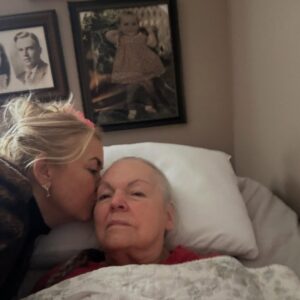When my daughter was two, she came to me crying. “I want to go home,” she hiccuped out of the blue. “We are home,” I said, getting on my knees so I could give her a proper hug. “No,” she wailed, “Our other home.” Ah, the home we left after the storm. I held my daughter in my arms and thought about how I could make her feel stable and secure in new environments. We had recently evacuated from New Orleans after Katrina and didn’t really have a “home” at the moment. Being a grown-up with a vagabond nature, this worked fine for me, but for a child, moving around a lot can feel unstable.
And that’s when storytelling caught my attention. I have worked with children for many years in different capacities, using dance and music as a form of creative therapy, but I had never attempted therapeutic storytelling. In my years of working as a teacher, I had seen the power of stories to teach children, to even transform their behavior and moods. Just for my own parenting, I had spent time attempting to improve my storytelling skills. I hired a master storyteller to teach me a class one summer. I attended puppetry workshops and learned different techniques. It seems like telling stories would be an inherent skill in human beings with our need to communicate and connect, but it has never come easily to me.
Here was my chance to try it out. I remembered a storyteller telling me that she had created a story about mother earth going under the earth to search for her lantern. The purpose of the story was two-fold: to reflect what happens each autumn when the sun gets smaller and smaller each day and humans must find their inner light, their courage and strength to face the coming dark of the winter months; also to help children feel warm and protected. I dug through my closet and pulled out my bag of arts and crafts. In it was a puppet story called The Mouse and Pumpkin, perfect for this situation. It’s the story of a little mouse who goes looking for a winter house to protect him from the winter cold and snow. I had bought the kit and felted the mouse, the pumpkin, and the few things the mouse would find on his journey to making his new home more cozy: a leaf blanket, a walnut shell bed, and a wool tuft mattress. The idea is that the child who hears this story will identify with the small vulnerable mouse and feel protected and safe when the mouse find sthe perfect winter home—a pumpkin.
Annabelle was fascinated. She watched the little mouse, captivated and listened carefully to the whole story. I found myself embellilshing the details of this simple story, gently moving the mouse from a field that smelled of apples to a tree that was shaking its last glorious leaves to the ground to the golden pumpkin patch, all on my lap. I didn’t know if she would listen to the wholoe thing, but she was riveted. After I told it to her, she wanted to hear it again, and then she spent the next few weeks playing with the little puppet world. She would take the little mouse and help it find its home. “There you go little mouse,” I heard her say when she didn’t know I was listening. “You’re cozy and safe. I’m here.” I had made puppets and props for this story from unspun sheeps’ wool. I felted it with a felting needle and they were a great texture for her little hands to touch. I’m always hopeful but skeptical that these sorts of things work but my daughter didn’t ask to go to our old home again.
On the advice of different storytellers, I have been attempting different ways to engage Annabelle in the natural world, keeping her world simple and nourishing and beautiful. It was recommended to me to make ladybugs out of rose hips by cutting them in half and using a sharpie to draw black dots on the backs. This is an elaborate craft for me, whos’ crafts end up looking like a three-year-old made them, but it worked. Annabelle played with them for weeks, covering them with tissue-blankets when they were cold, gently placing them in little tiny boxes at night.
Tips I have received from storytellers on how to captivate a young audience:are to imagine you’re wrapping your audience in a large cloak, encircling them and pulling them in. Use “Once upon a time” and “happily ever after” as ways to let children know that they are entering into an altered reality, the reality of “storytime.” You can also use a prop or rhyme that tells children it’s time to tune in. Speak clearly with crisp consonants. Tell stories that are interesting to you. The children will pick up on you feeling tired or bored of a story.
Stories have the capability of healing, of transporting of entertaining, of inspiring. When Henry was little and couldn’t use his words, he turned to hitting and pinching to get his message across. I told him the story of the little crab who kept pinching his friends, from Healing Stories for Challenging Behavior by Susan Perrow. The crab’s friends don’t like it, so they decide they will make him a pair of mittens to wear on his pinchers to remind him how to use his hands gently. Henry and Annabelle loved this story and immediately ran to find mittens for Henry. Henry never pinched again! He wore his mittens when he wanted, but something about the story resonated with him on a deep level.
After that, whenever the kids would see toddlers hitting, pinching, biting, etc., they’d say, “That baby needs mittens!”
It’s a positive funny way to solve a difficult behavioral issue. And I couldn’t believe how effective it was. I recently bought Susan Perrow’s newest book, Therapeutic Storytelling: 101 Healing Stories for Children. I can’t wait try out some of these!














